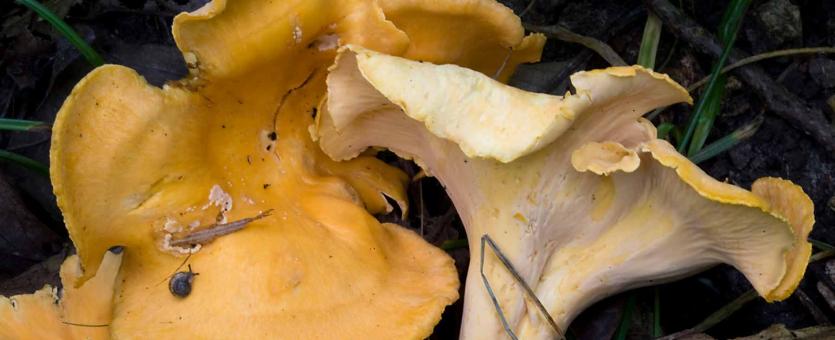
Bright orange to yellow cap, wavy margins; smooth on the underside. Grows singly or in groups of up to very many in the soil. Late June to early August. Cap convex, becoming flat to funnel shaped, sunken in center, sometimes flowerlike; orange to orange-yellow; texture smooth. Underside orange to yellow, smooth or slightly ridged; does not have true gills. Stalk can be curved or off-center; orange to yellowish to whitish; texture smooth; flesh is white. Spore print pinkish yellow. Spores magnified are elliptical, smooth.
Lookalikes: The poisonous jack-o’-lantern (Omphalotus illudens) grows clustered on stumps or buried wood, has close, sharp-edged gills, and fruits in the fall. The hedgehog (Hydnum repandum) has a toothed underside. The golden chanterelle (Cantharellus cibarius) has forked ridges on the underside.
Cap width: ½–6 inches; stalk length: 1–3 inches; stalk width: ½–1 inch.
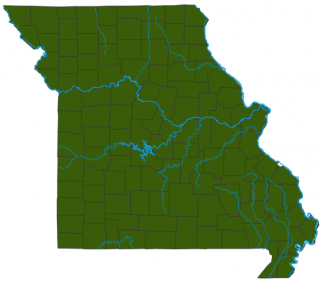
Statewide.
Habitat and Conservation
Grows singly or in groups of up to very many in moss, leaves, grass, in paths, and under oaks. Reappears year after year in the same areas. It is very common when in season, and you should find plenty in Missouri’s oak-hickory forests (though you have to be willing to brave ticks, chiggers, and sweat rolling down your face). The smooth chanterelle can be small, tight, and round, or it can be large and flowerlike with wavy edges. Either way, it is easy to identify.
Status
A choice edible mushroom—with caution. Take care not to confuse chanterelles with the poisonous jack-o’-lantern. Smooth chanterelles are best preserved by sautéing in butter with a little onion and freezing in plastic zip bags. Many people say they have a fruity smell, like the odor of apricots.
Life Cycle
This species is mycorrhizal: It exists as a network of cells (mycelium) connected to tree roots, in a symbiotic relationship with the tree (but not growing on wood). This species is particularly associated with oaks. When ready to reproduce, the mycelium develops mushrooms, which are reproductive structures. Spores are produced on the underside of the cap and are released to begin new mycelia elsewhere. The mycelium of a mushroom can live for decades.
Human Connections
Chanterelles are especially prized for their culinary value and are a favorite of mushroom hunters in many countries in Asia and Europe, as well as here. Mushroom hunting is an exciting, fun, and rewarding hobby.
Ecosystem Connections
This is one of many fungus species that help nourish forest trees through symbiosis. The netlike fibers of the fungus cover the surface of a tree’s roots, increasing the surface area and the roots’ ability to absorb water and nutrients. In return, the tree shares nutrients with the fungus.
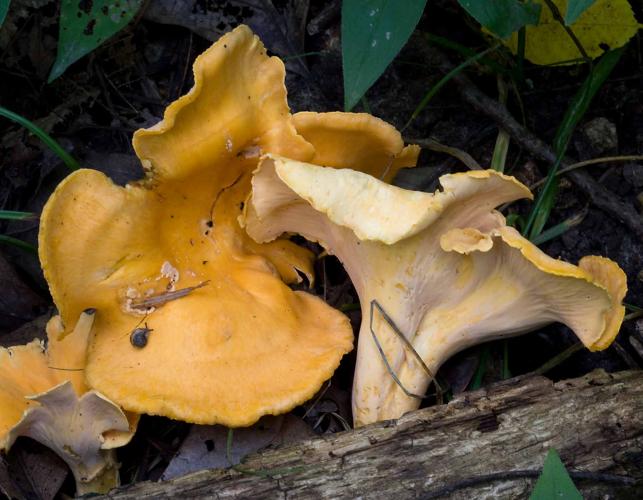
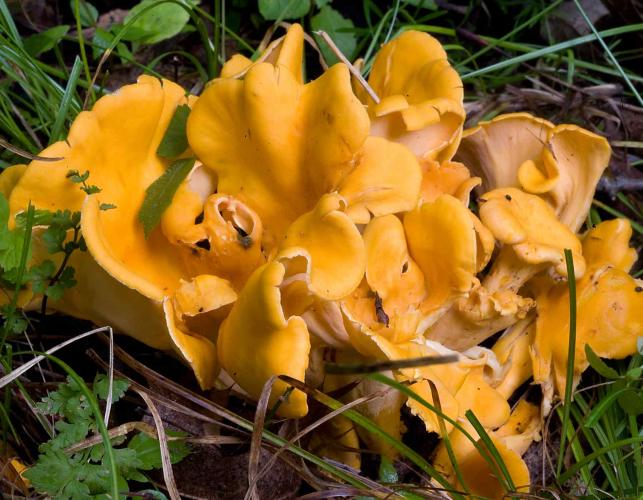
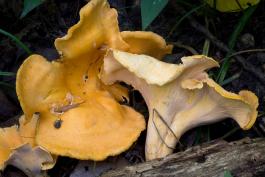

Mushrooms are a lot like plants, but they lack chlorophyll and have to take nutrients from other materials. Mushrooms are neither plants nor animals. They are in a different kingdom — the fungi. Fungi include the familiar mushroom-forming species, plus the yeasts, molds, smuts, and rusts.
Always be cautious when eating edible mushrooms. Be absolutely sure of the ID, and only eat a small amount the first time you try it to avoid a reaction..





















